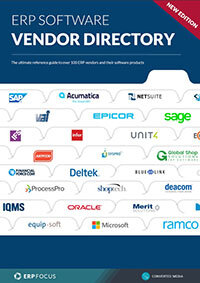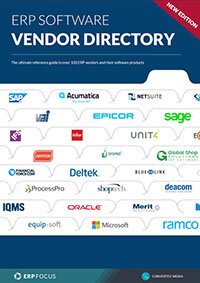Three reasons business change represents an opportunity for ERP managers
According to a March 2016 IFS survey “…when it comes to managing change within a business, a strong sense of company direction, clear business objectives and effective leadership are the most important factors.” In the case of managing business change in association with an ERP platform, however, these general management goals become more granular and consequently offer much greater commercial value.
Today, enterprises are largely dependant on the depth and accuracy of commercial elements driven by identifiable data elements. These are easily converted into useful bits of business intelligence (BI) that hopefully lead to enhanced revenue downstream.
In the past, ‘business change’ typically meant internal turbulence that usually triggered lost efficiency enterprise-wide. Now, however, ERP processes can mitigate previous weakness, by offering various ways to create order from chaos while overcoming negative disruptions; whether a change is large or small.
Consider various other business messages delivered by the IFS survey; among the three most influential market or social disruptions that impact business respondents the survey opines that customer demand is the most influential factor. C-level leadership is considered second most important, and finally, the critical need for an active and flexible supply-chain. Note that the central impact driver is customer demand; and what systems are best at identifying, targeting, and trapping of unattended data; followed by the continual delivery of meaningful ’information? ERP platforms are.
Therefore, with facing business disruption active ERP-driven operations offer three principal advantages:
Uninterrupted competitive market research:
In the past, when managing business change competitive analyses tended to go by the wayside, since companies in flux typically focused on operational stability first. However, today’s ERP-based systems are amply equipped to execute automatic scripts that continue to secure and classify fresh marketing insights in real-time, regardless of what may be going on elsewhere within an industry or business segment
Examples include:
- Mobility-adapted trapping of individual customer elements, i.e. name, location etc.
- Realtime filtering of customer-provided transaction records, i.e. sale type, product type, itemized/total value etc.
- Geo-located market density analysis, i.e. product sales values calculated on the basis of physical location etc.
Big Data; big opportunity:
Unexpected internal and external issues typically cause business disruption. While these impacts are typically unpleasant, if an enterprise is supported by an ERP platform, advantages, rather than disadvantages could be in the offing. Resources-based systems thrive on fresh data; and what better than to have legacy information turned upside down where the underbelly of a procedure, process or competitor position is suddenly exposed, and where deeper investigations provide additional performance insights.
Examples include:
- Overarching demographic analysis
- Large-scale product type densities
- Drill-downs associated with each
The cost of change:
On a good day, issues of cost control typically cause headaches for enterprise managers. However, when daily concerns are exacerbated by the need for managing business change, sometimes the impacts are too much to bear. Cost-driven ERP processes offer companies a bit of grace under fire, by allowing managers to see what cost elements are problematic in real-time, and subsequently offer an ability to respond before trouble can cause a company to fall entirely off the road.
Examples include:
- Realtime direct-to-accounting metrics
- Warehouse and distribution delivery analyses
- Unexpected cost variances, i.e. differences between projected versus actual costs
Free white paper

ERP Software Vendor Directory
Put the most comprehensive ERP vendor directory on your desk today

Related articles
-

How to conduct a thorough ERP audit
The types of ERP audit, and step-by-step instructions on how to audit your ERP system
-

CMMC Compliance: What Aerospace and Defense Manufacturers Need to Know
Key insights on CMMC compliance, deadlines, and securing DoD contracts with CMMC 2.0 certificatio...
-
![Three direct links between ERP and manufacturing revenue [image by Snowing on Freepik] Three direct links between ERP and manufacturing revenue [image by Snowing on Freepik]](/pictures/W1siZiIsIjIwMjUvMDEvMjAva2ZwYjAzb3gzX1RocmVlX2RpcmVjdF9saW5rc19iZXR3ZWVuX0VSUF9hbmRfbWFudWZhY3R1cmluZ19yZXZlbnVlX2ltYWdlX2J5X1Nub3dpbmdfb25fRnJlZXBpa18uanBnIl0sWyJwIiwidGh1bWIiLCI0MDB4MjY2IyJdLFsicCIsImVuY29kZSIsImpwZyIsIi1xdWFsaXR5IDg1Il1d/Three%20direct%20links%20between%20ERP%20and%20manufacturing%20revenue%20%5Bimage%20by%20Snowing%20on%20Freepik%5D.jpg?sha=b45b02a140cc8680)
Three direct links between ERP and manufacturing revenue
What you need to know to help you achieve a return on your manufacturing ERP investment

